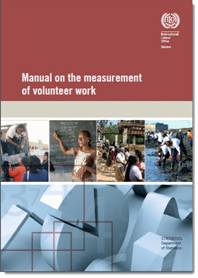Exploring the Academic Archives and Beyond: Research Can Be Your Friend
 Do you have a fresh concept for building your volunteer program, and you wonder if anyone has ever tried it before? Or perhaps you need someone with formal skills in scientific methods to help you design a plan for implementation? When you need answers to both of these issues, you can turn to academic research and research practitioners. Exploration of research literature can result in ideas and evidence to support best practices in volunteer engagement, and results can be multiplied through collaborative partnerships with faculty and student scholars.
Do you have a fresh concept for building your volunteer program, and you wonder if anyone has ever tried it before? Or perhaps you need someone with formal skills in scientific methods to help you design a plan for implementation? When you need answers to both of these issues, you can turn to academic research and research practitioners. Exploration of research literature can result in ideas and evidence to support best practices in volunteer engagement, and results can be multiplied through collaborative partnerships with faculty and student scholars.
In this article, Janina M. Fuller presents a practical approach to mining scholarly literature and to finding colleagues in academia to create partnerships that will expand your research horizons even further. Seeking research-based articles that offer fresh insights into the everyday concerns of volunteer management professionals? Writing a grant proposal to fund a new programming initiative? Whatever your goal, this article will provide new access to the vast and largely untapped resource of scholarly literature, and to the people who create it.

 After more than a decade in the classroom, Sarah Jane Rehnborg has taught volunteer management on the graduate level to students from public affairs, business management, social work, communications, fine arts and other areas of specialization. Along the way, Rehnborg discovered some interesting resources and methods to convey some of the key concepts in volunteer management — teaching tools that are equally applicable to students and any audience that needs to be educated about our field.
After more than a decade in the classroom, Sarah Jane Rehnborg has taught volunteer management on the graduate level to students from public affairs, business management, social work, communications, fine arts and other areas of specialization. Along the way, Rehnborg discovered some interesting resources and methods to convey some of the key concepts in volunteer management — teaching tools that are equally applicable to students and any audience that needs to be educated about our field.
 Sarah Jane Rehnborg has more than a decade in the classroom – teaching volunteer management on the graduate level to students from public affairs, business management, social work, communications, fine arts and other areas of specialization. Along the way, Rehnborg found some interesting resources and methods to convey some of the key concepts in volunteer management. Since her students are frequently new to studying volunteer issues, these teaching tools are equally applicable to any audience that needs to be educated about our field.
Sarah Jane Rehnborg has more than a decade in the classroom – teaching volunteer management on the graduate level to students from public affairs, business management, social work, communications, fine arts and other areas of specialization. Along the way, Rehnborg found some interesting resources and methods to convey some of the key concepts in volunteer management. Since her students are frequently new to studying volunteer issues, these teaching tools are equally applicable to any audience that needs to be educated about our field. We hear over and over again how volunteers are indispensable to many organizations. While we have previously covered articles on different methods used to estimate a value for volunteer contributions, a new study out of New Zealand looks at how volunteer value is communicated, both internally and externally. In this issue, reviewer Laurie Mook examines how a team of researchers conducted a qualitative study of local and national medium-sized health charities, and provides some thought-provoking insights into the barriers and drivers to communicating volunteer value for these organizations. An interesting aspect of the study, Mook explains, is that the researchers interviewed the executive director, fundraising manager and manager of volunteers from each organization, providing for a more holistic look at how volunteer value is communicated. Mook also provides her insights into the practical implications of the study, encouraging readers to reflect on the implications of making volunteer contributions visible while also considering the impact of keeping them invisible.
We hear over and over again how volunteers are indispensable to many organizations. While we have previously covered articles on different methods used to estimate a value for volunteer contributions, a new study out of New Zealand looks at how volunteer value is communicated, both internally and externally. In this issue, reviewer Laurie Mook examines how a team of researchers conducted a qualitative study of local and national medium-sized health charities, and provides some thought-provoking insights into the barriers and drivers to communicating volunteer value for these organizations. An interesting aspect of the study, Mook explains, is that the researchers interviewed the executive director, fundraising manager and manager of volunteers from each organization, providing for a more holistic look at how volunteer value is communicated. Mook also provides her insights into the practical implications of the study, encouraging readers to reflect on the implications of making volunteer contributions visible while also considering the impact of keeping them invisible. Due to the nature of volunteering, this sector of society is not often associated with conflict. However, like the wider community, conflict within volunteer-involving organisations can be a persistent problem. Although most volunteers enjoy positive and fulfilling experiences and are generally satisfied with the volunteering process, research undertaken by Volunteering WA shows that around 10 per cent of volunteers have been involved in a conflict with an organisation where they have volunteered.
Due to the nature of volunteering, this sector of society is not often associated with conflict. However, like the wider community, conflict within volunteer-involving organisations can be a persistent problem. Although most volunteers enjoy positive and fulfilling experiences and are generally satisfied with the volunteering process, research undertaken by Volunteering WA shows that around 10 per cent of volunteers have been involved in a conflict with an organisation where they have volunteered. This issue’s Research to Practice provides great food for thought on organizational factors affecting volunteer management. For example, how do the goals of the organization, area of activity, or degree of bureaucracy impact the role that a volunteer management program can take in the strategic achievement of an organization’s mission? How can organizational settings be “assessed and aligned to the needs of volunteers, but also to those of the organization and society at large?”
This issue’s Research to Practice provides great food for thought on organizational factors affecting volunteer management. For example, how do the goals of the organization, area of activity, or degree of bureaucracy impact the role that a volunteer management program can take in the strategic achievement of an organization’s mission? How can organizational settings be “assessed and aligned to the needs of volunteers, but also to those of the organization and society at large?” It’s a challenge that leaders of volunteers have always faced: how to retain productive volunteers. According to Volunteering in America 2008, one in three American volunteers dropped out in 2007, and this lack of retention can be costly. True, some turnover is expected and even projected. Oftentimes though, good volunteers are lost because of exceedingly preventable reasons. In addition to general retention issues, burnout is often cited as a reason for volunteer attrition. Volunteer resources managers would benefit from understanding the causes of burnout; ways to mitigate and prevent burnout; and how to identify burnout in their unpaid staff members.
It’s a challenge that leaders of volunteers have always faced: how to retain productive volunteers. According to Volunteering in America 2008, one in three American volunteers dropped out in 2007, and this lack of retention can be costly. True, some turnover is expected and even projected. Oftentimes though, good volunteers are lost because of exceedingly preventable reasons. In addition to general retention issues, burnout is often cited as a reason for volunteer attrition. Volunteer resources managers would benefit from understanding the causes of burnout; ways to mitigate and prevent burnout; and how to identify burnout in their unpaid staff members. In his final Along the Web, internationally-recognized author Steve McCurley presents a reference to himself: a guide to “where to find Steve McCurley’s stuff on the Web,” neatly divided into Books, Articles and the ever-popular “Other” category. This is one of those articles to bookmark, print and keep, scan and store. The writings of Steve McCurley, and his impact on the volunteerism profession, are definitely worth keeping.
In his final Along the Web, internationally-recognized author Steve McCurley presents a reference to himself: a guide to “where to find Steve McCurley’s stuff on the Web,” neatly divided into Books, Articles and the ever-popular “Other” category. This is one of those articles to bookmark, print and keep, scan and store. The writings of Steve McCurley, and his impact on the volunteerism profession, are definitely worth keeping.  In
In